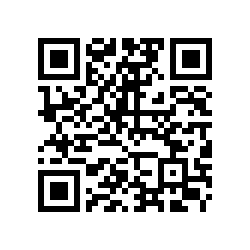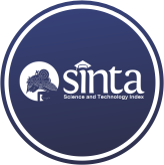Implementasi Metode Decision Tree pada Sistem Prediksi Status Gizi Balita
(1) Universitas Muhammadiyah Surakarta, Jawa Tengah, Indonesia
(2) Universitas Muhammadiyah Surakarta, Jawa Tengah, Indonesia
(*) Corresponding Author
Abstract
Full Text:
PDFReferences
N. R. Fauzia, N. M. A. Sukmandari, and K. Y. Triana, “Hubungan Status Pekerjaan Ibu Dengan Status Gizi Balita,” J. Cent. Res. Publ. Midwifery Nurs., vol. 3, no. 1, pp. 28–32, 2019, doi: 10.36474/caring.v3i1.101.
L. Suryani, S. Payung, and N. Pekanbaru, “Faktor Yang Mempengaruhi Status Gizi Balita Di Wilayah Kerja Puskesmas Payung Sekaki,” JOMIS (Journal Midwifery Sci., vol. 1, no. 2, pp. 47–53, 2017,
P. Studi et al., “Status Gizi Balita Di Dinas Kesehatan”.
A. Prasetio, “Simulasi Penerapan Metode Decision Tree (C4.5) Pada Penentuan Status Gizi Balita,” J. Nas. Komputasi dan Teknol. Inf., vol. 4, no. 3, pp. 209–214, 2021, doi: 10.32672/jnkti.v4i3.2983.
R. Setiawan and A. Triayudi, “Klasifikasi Status Gizi Balita Menggunakan Naïve Bayes dan K-Nearest Neighbor Berbasis Web,” J. Media Inform. Budidarma, vol. 6, no. 2, p. 777, 2022, doi: 10.30865/mib.v6i2.3566.
E. T. Lestari and J. Adhiva, “Implementation Naive Bayes Classifier Algorithm and K-Nearest Neighbor For Obesity Nutritional Status of Children with Disabilities Implementasi Algoritma Naive Bayes Classifier dan K-Nearest Neighbor Untuk Klasifiasi Status Gizi Obesitas Anak Disabilitas,” SENTIMAS Semin. Masional Penelit. dan Penabdian Masy., pp. 1–11, 2022.
K. Riskerdas, “Hasil Utama Riset Kesehatan Dasar (RISKEDAS),” J. Phys. A Math. Theor., vol. 8, no. 44, pp. 1–200, 2018.
F. Gorunescu, Data Mining: Concepts, models, and techniques (Softcover). 2011.
D. Setianingsih and R. F. Hakim, “Penerapan Data Mining dalam Analisis Kejadian Tanah Longsor di Indonesia dengan Menggunakan Association Rule Algoritma Apriori,” Pros. Semin. Nas. Mat. dan Pendidik. Mat. UMS 2015, pp. 731–741, 2015.
Lindawati, “Data Mining Dengan Teknik Clustering Dalam Pengklasifikasian Data Mahasiswa Studi Kasus Prediksi Lama Studi Mahasiswa Universitas Bina Nusantara,” Univ. Stuttgart, vol. 2008, no. semnasIF, pp. 174–180, 2008.
R. Kurniasari and A. Fatmawati, “Penerapan Algoritma C4.5 Untuk Penjurusan Siswa Sekolah Menengah Atas,” Komputa J. Ilm. Komput. dan Inform., vol. 8, no. 1, pp. 19–27, 2019, doi: 10.34010/komputa.v8i1.3045.
V. M. Patro and M. Ranjan Patra, “Augmenting Weighted Average with Confusion Matrix to Enhance Classification Accuracy,” Trans. Mach. Learn. Artif. Intell., vol. 2, no. 4, 2014, doi: 10.14738/tmlai.24.328.
E. Sudarmilah and P. A. Wibowo, “Aplikasi Augmented Reality Game Edukasi Untuk Pengenalan Organ Tubuh Manusia,” Khazanah Inform. J. Ilmu Komput. dan Inform., vol. 2, no. 1, pp. 20–25, 2016, doi: 10.23917/khif.v2i1.1945.
A. A. Wahid, “Analisis Metode Waterfall Untuk Pengembangan Sistem Informasi,” J. Ilmu-ilmu Inform. dan Manaj. STMIK, no. November, pp. 1–5, 2020.
M. Susilo, “Rancang Bangun Website Toko Online Menggunakan Metode Waterfall,” InfoTekJar (Jurnal Nas. Inform. dan Teknol. Jaringan), vol. 2, no. 2, pp. 98–105, 2018, doi: 10.30743/infotekjar.v2i2.171.
M. N. Arifin and D. Siahaan, “Structural and Semantic Similarity Measurement of UML Use Case Diagram,” Lontar Komput. J. Ilm. Teknol. Inf., vol. 11, no. 2, p. 88, 2020, doi: 10.24843/lkjiti.2020.v11.i02.p03.
B. Khafid and D. A. P. Putri, “Pesma Apps as Android-based Integrated Applications for Mahasantri Pesma KH Mas Mansur UMS,” Khazanah Inform. J. Ilmu Komput. dan Inform., vol. 6, no. 2, pp. 95–102, 2020, doi: 10.23917/khif.v6i2.10494.
R. B. Susanto, P. S. Informatika, F. Komunikasi, D. A. N. Informatika, and U. M. Surakarta, “Gudang ( Studi Kasus Di Yulian Aquatic ),” 2022.
T. Hidayat and M. Muttaqin, “Pengujian sistem informasi pendaftaran dan pembayaran wisuda online menggunakan black box testing dengan metode equivalence partitioning dan boundary value analysis,” J. Tek. Inform. UNIS, vol. 6, no. 1, pp. 2252–5351, 2018, doi: 10.33005/jifosi.v2i2.326.
M. Maryam and H. W. Ariono, “Sistem Pakar Pengklasifikasi Stadium Kanker Serviks Berbasis Mobile Menggunakan Metode Decision Tree,” J. Kaji. Ilm., vol. 22, no. 3, pp. 267–278, 2022, doi: 10.31599/jki.v22i3.1368.
M. V. Ruma, Yohanes, “Klasifikasi Status Gizi Balita Menggunakan Metode Naive Bayes Classification,” p. 133, 2020.
DOI: http://dx.doi.org/10.30645/j-sakti.v7i2.681
Refbacks
- There are currently no refbacks.
J-SAKTI (Jurnal Sains Komputer & Informatika)
Published Papers Indexed/Abstracted By:
Jumlah Kunjungan :



















